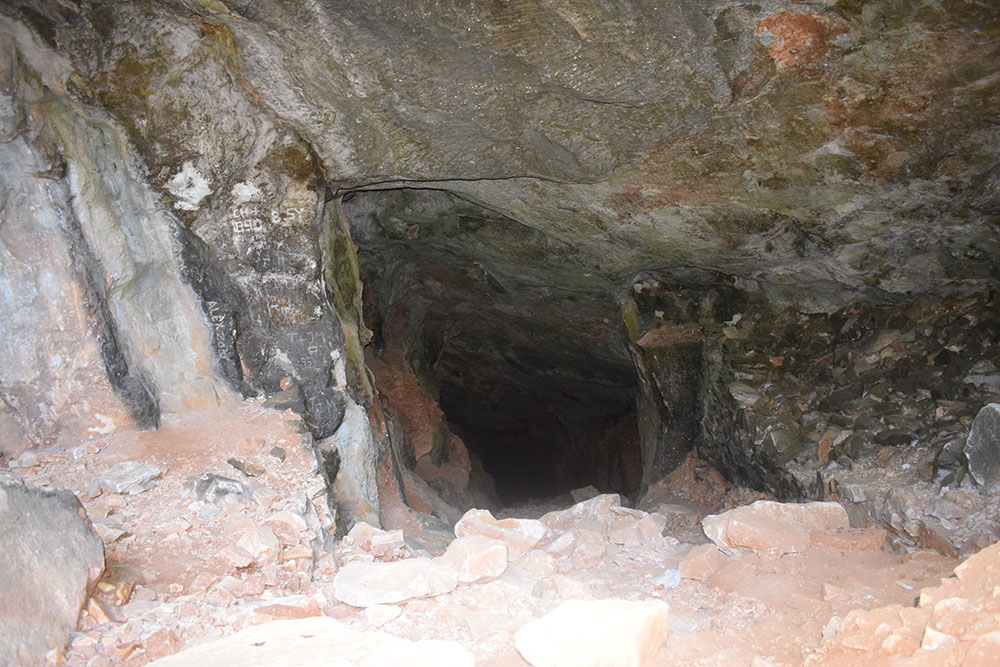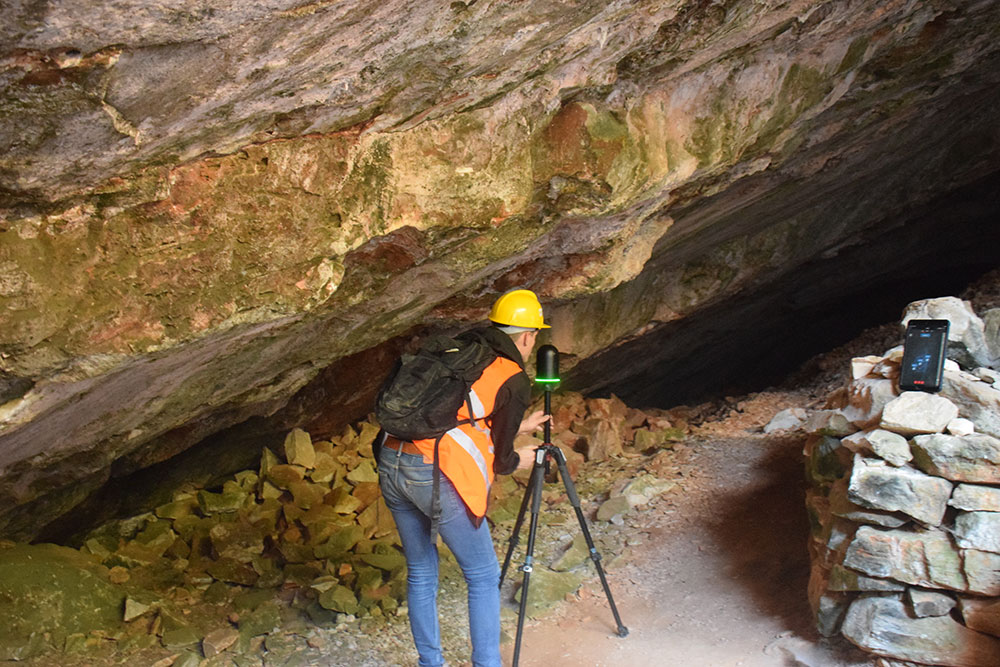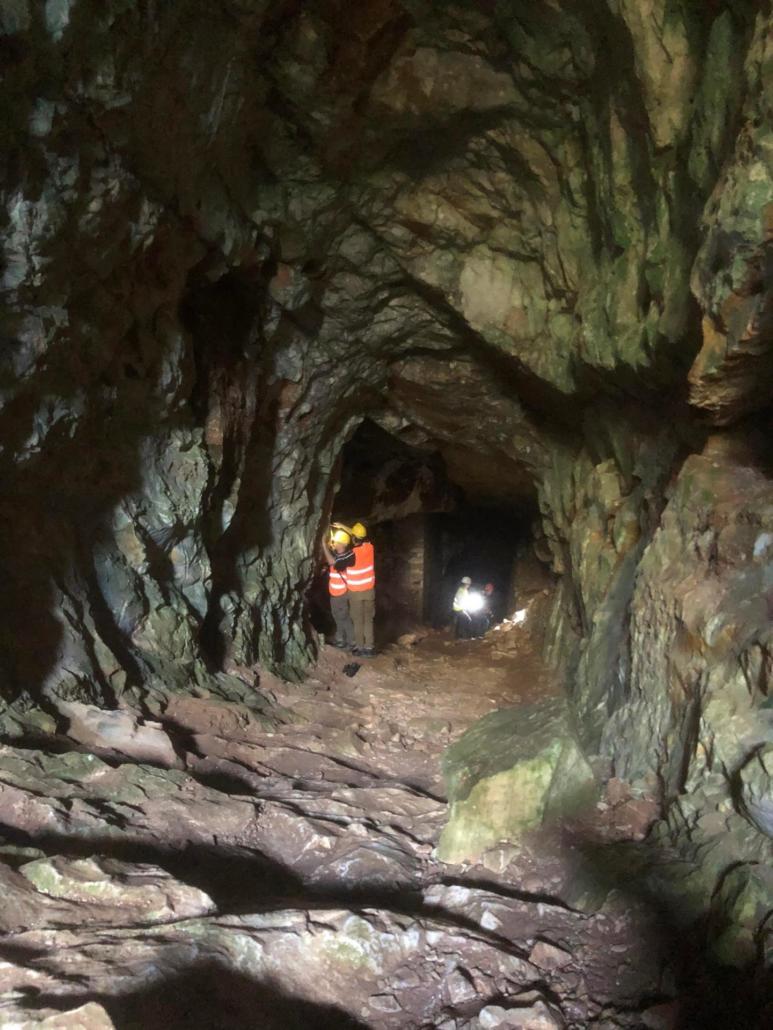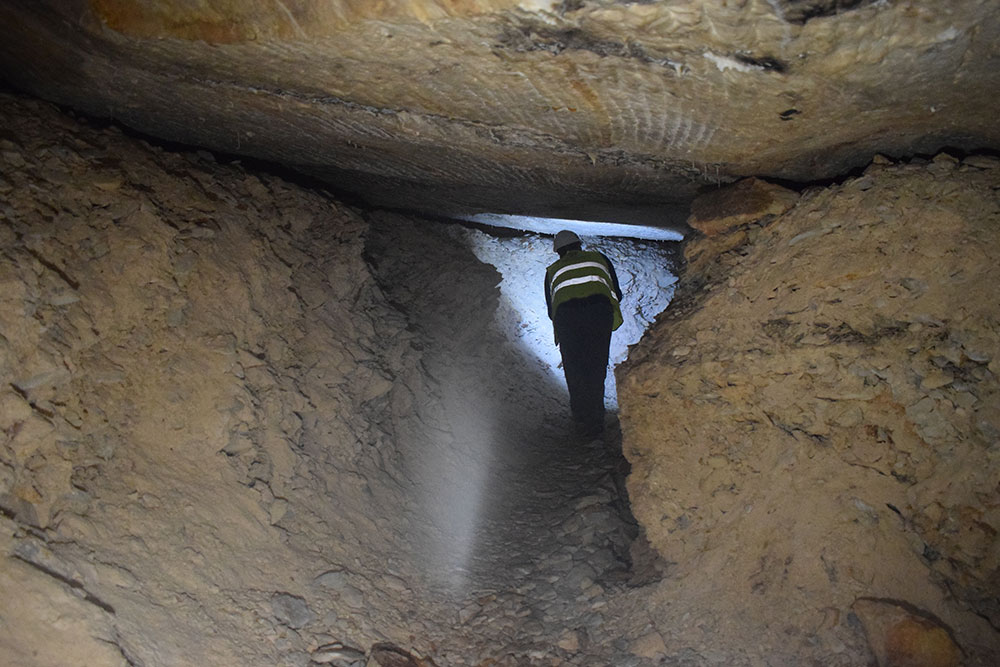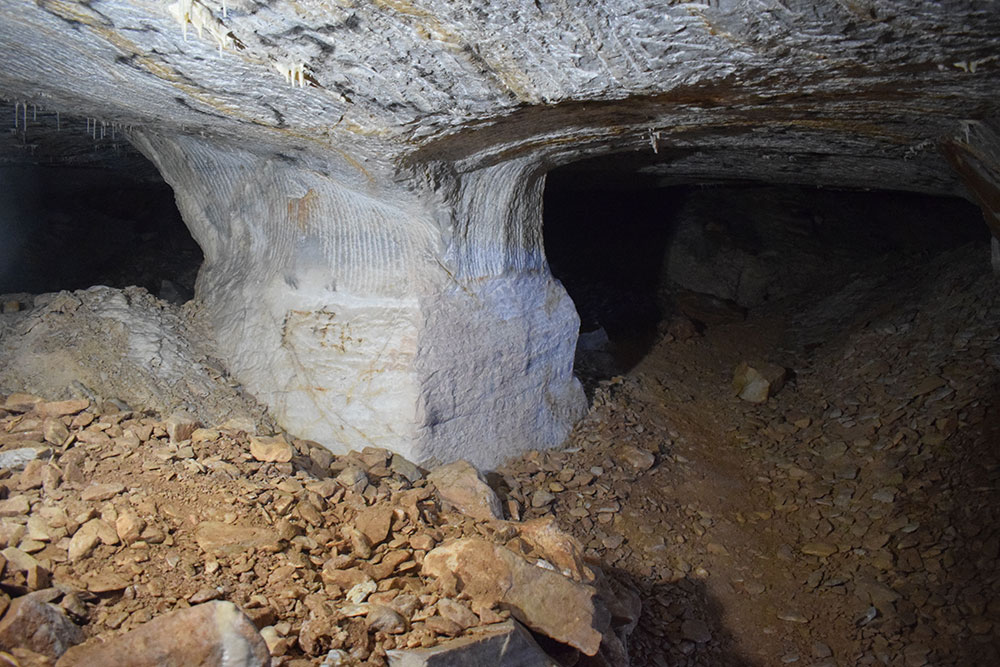Our Top Priorities
1- The stability of the underground galleries
This is of paramount importance, especially in the case of the Nymphs’ quarry, in some sections of which geotechnical instabilities have been detected, raising concerns about the stability of the galleries and the safety of visitors.
This matter is the exclusive responsibility of the Ministry of Culture and we are pleased that the necessary actions have started after a long period of preparatory work by the Ephorate of Cyclades Antiquities and ourselves. The first phase involves a 3D digital topographic survey and a geological investigation of the underground galleries by the National Technical University of Athens and is in progress with our practical support.
We are currently working on preparing the second phase, including the necessary fundraising. This is a crucial step as it will involve the assessment of the stability risks and will specify any necessary support to prop up sections of the galleries or other remedial measures. Both phases are expected to be completed by the end of 2022.
Photos from the field work at the ancient quarries of the team of professor V. Marinos from the National Technical University of Athens.
2- The issue of ownership
The underground quarries belong to the Greek state, but the surface land of the archaeological area is in different private ownerships. The expropriation of key parcels of land by the Ministry has been progressing very slowly.
During the summer, the ownership issue attracted considerable publicity due to the proposal of the company that operates the neighbouring quarries to acquire the parcel of land that includes the entrance to the Nymphs’ quarry. This proved controversial as many Parian organisations saw a conflict of interest in this company’s intervention, considering that its operation potentially poses risks to the stability of the underground galleries. In August, the Municipal Council resolved to pursue the option of the long-term leasing of the land as the most feasible solution.
Our organisation is in touch with all sides – Ministry, Municipality and private owners – to provide practical support, including through legal advice and fundraising, to break the deadlock and get the land into public ownership the soonest as possible.
There is a clear need for an agreed strategic framework regarding creating the archaeological and cultural park in the designated archaeological area in Marathi. We have proposed to build on previous studies, extending and adapting them to make the underground quarries the main focus of the park and we envisage a participative process and extensive public consultation.
The General Strategic Plan (master plan) will determine the uses of land and buildings, the circulation scheme for pedestrians and vehicles, and will propose appropriate activities for the park as well as digital solutions. It will also establish the specifications of the sub-projects that are necessary for the creation of the park. The implementation of the plan, such as the opening of sections of underground galleries to visitors, the creation of a visitors’ centre, etc. will go hand-in-hand with the acquisition of property rights over land and buildings and securing the necessary funding.
We have done the preparatory work to launch this exercise and are working on obtaining the agreement of the Ministry of Culture and finalising the required funding from donors, hoping to kick off before the end of this year.

